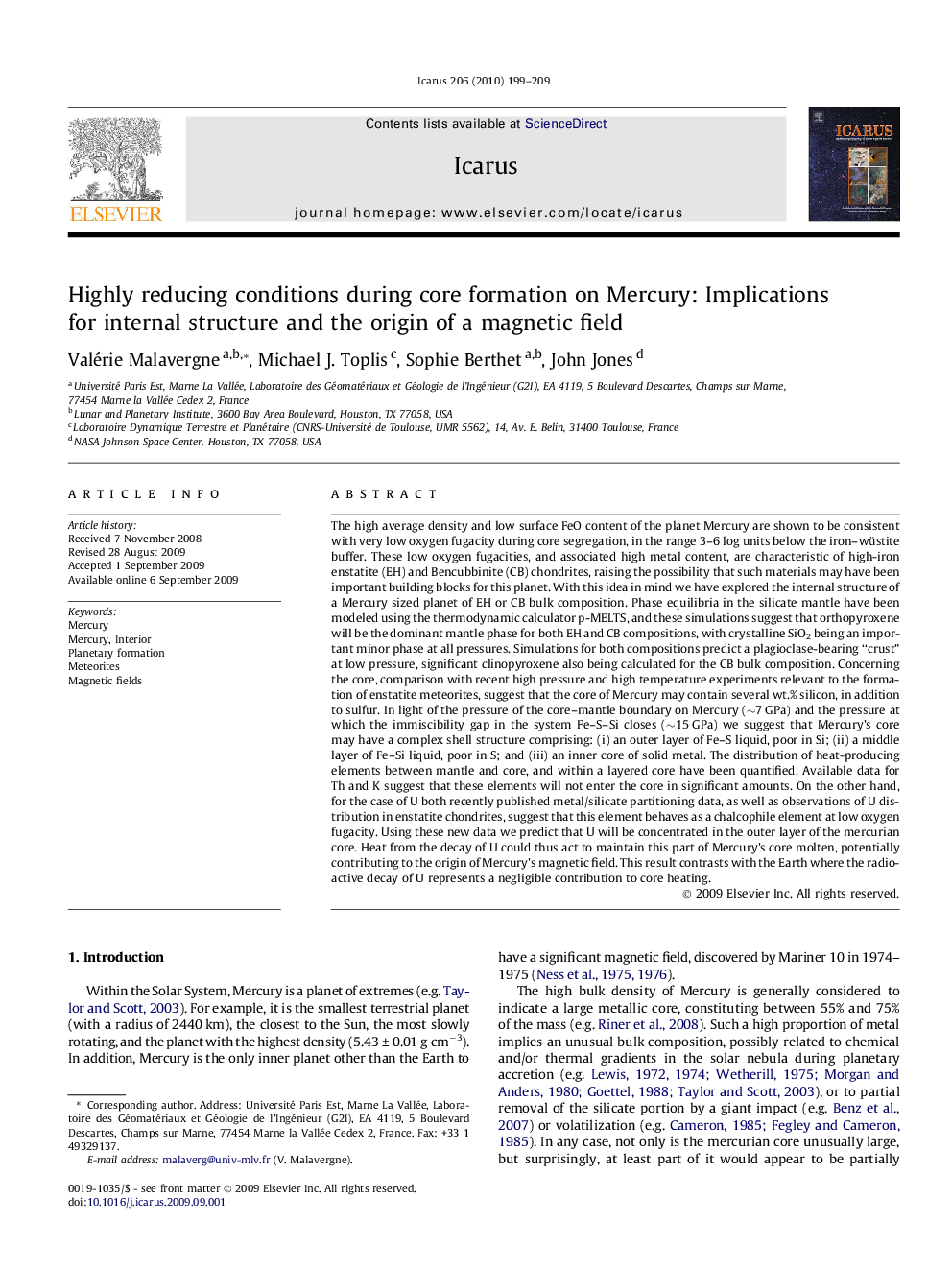| کد مقاله | کد نشریه | سال انتشار | مقاله انگلیسی | نسخه تمام متن |
|---|---|---|---|---|
| 1774723 | 1021172 | 2010 | 11 صفحه PDF | دانلود رایگان |

The high average density and low surface FeO content of the planet Mercury are shown to be consistent with very low oxygen fugacity during core segregation, in the range 3–6 log units below the iron–wüstite buffer. These low oxygen fugacities, and associated high metal content, are characteristic of high-iron enstatite (EH) and Bencubbinite (CB) chondrites, raising the possibility that such materials may have been important building blocks for this planet. With this idea in mind we have explored the internal structure of a Mercury sized planet of EH or CB bulk composition. Phase equilibria in the silicate mantle have been modeled using the thermodynamic calculator p-MELTS, and these simulations suggest that orthopyroxene will be the dominant mantle phase for both EH and CB compositions, with crystalline SiO2 being an important minor phase at all pressures. Simulations for both compositions predict a plagioclase-bearing “crust” at low pressure, significant clinopyroxene also being calculated for the CB bulk composition. Concerning the core, comparison with recent high pressure and high temperature experiments relevant to the formation of enstatite meteorites, suggest that the core of Mercury may contain several wt.% silicon, in addition to sulfur. In light of the pressure of the core–mantle boundary on Mercury (∼7 GPa) and the pressure at which the immiscibility gap in the system Fe–S–Si closes (∼15 GPa) we suggest that Mercury’s core may have a complex shell structure comprising: (i) an outer layer of Fe–S liquid, poor in Si; (ii) a middle layer of Fe–Si liquid, poor in S; and (iii) an inner core of solid metal. The distribution of heat-producing elements between mantle and core, and within a layered core have been quantified. Available data for Th and K suggest that these elements will not enter the core in significant amounts. On the other hand, for the case of U both recently published metal/silicate partitioning data, as well as observations of U distribution in enstatite chondrites, suggest that this element behaves as a chalcophile element at low oxygen fugacity. Using these new data we predict that U will be concentrated in the outer layer of the mercurian core. Heat from the decay of U could thus act to maintain this part of Mercury’s core molten, potentially contributing to the origin of Mercury’s magnetic field. This result contrasts with the Earth where the radioactive decay of U represents a negligible contribution to core heating.
Journal: Icarus - Volume 206, Issue 1, March 2010, Pages 199–209